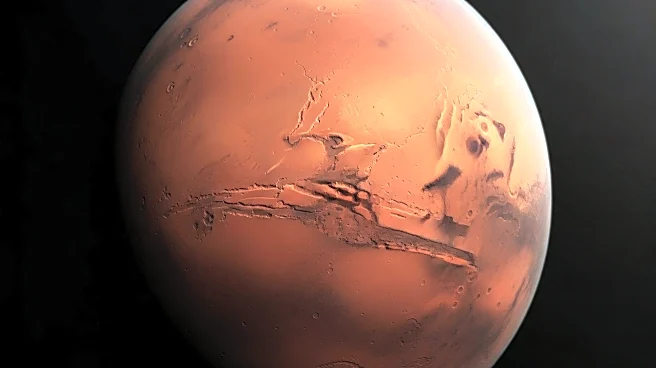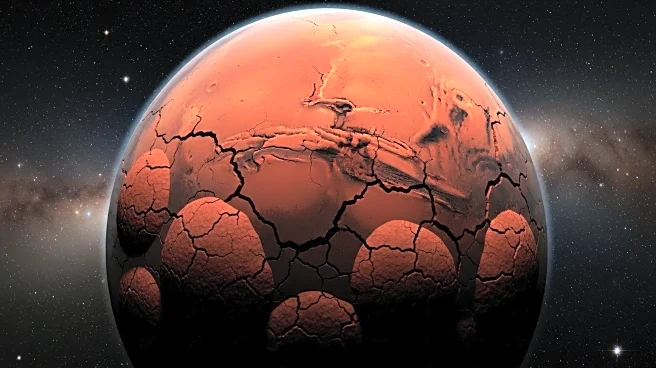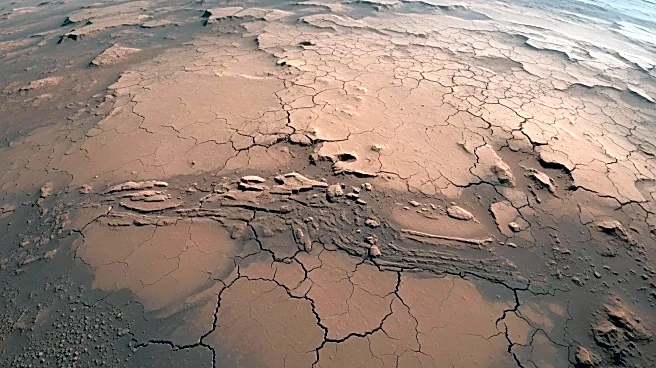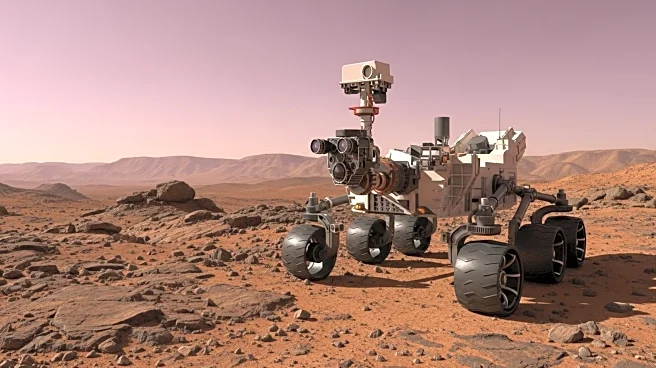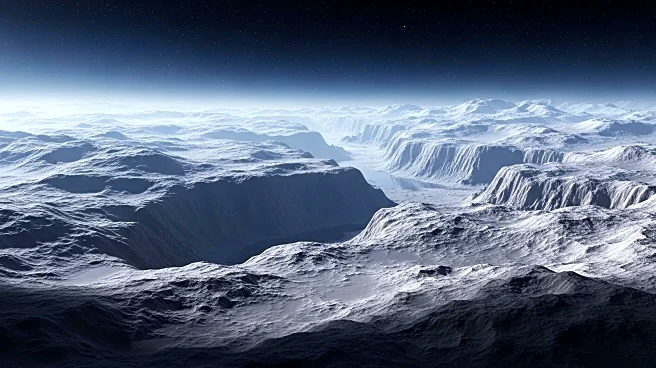What's Happening?
Recent research utilizing data from NASA's decommissioned InSight probe has uncovered significant geological formations within Mars' mantle, suggesting a tumultuous past. The study, published in Nature, indicates that Mars' mantle contains ancient fragments up to 2.5 miles wide, remnants of massive impacts by planet-sized objects. These findings were made possible through InSight's seismic detection tools, which identified large formations disrupting the smoother regions of the mantle. The study's co-author, Constantinos Charalambous, explained that these impacts generated enough energy to melt large portions of Mars into magma oceans, which later crystallized into distinct material chunks. This discovery highlights Mars' relatively inert geological state compared to Earth, where plate tectonics continuously recycle the crust and mantle.
Why It's Important?
Understanding Mars' geological history provides insights into the planet's current state and its potential for future exploration. The findings suggest that Mars' mantle has remained largely unchanged for billions of years, preserving evidence of its early violent history. This knowledge could inform future missions to Mars and other rocky planets, as it offers a glimpse into the processes that shaped these celestial bodies. Additionally, the study enhances our understanding of planetary formation and the impact of massive collisions, which have also played a role in Earth's geological history, such as the formation of the Moon.
What's Next?
The research opens avenues for further exploration of Mars and other terrestrial planets. Future missions may focus on deeper seismic studies to map the Martian mantle more comprehensively. Understanding the mantle's composition and structure could aid in assessing Mars' potential for past life and its suitability for human exploration. Additionally, the study's findings may influence the design of future missions to other planets, as scientists seek to uncover similar geological histories.
Beyond the Headlines
The study raises questions about the long-term stability of planetary mantles and the role of early catastrophic events in shaping planetary environments. It also highlights the importance of preserving and analyzing data from past missions, as new technologies and methodologies can yield fresh insights from existing datasets.
